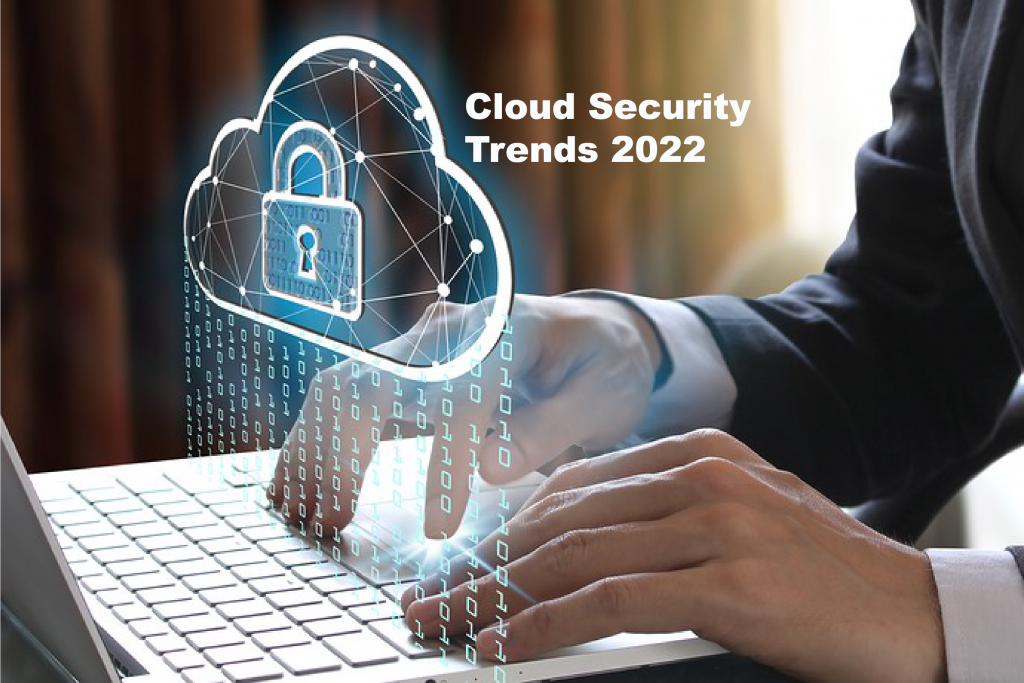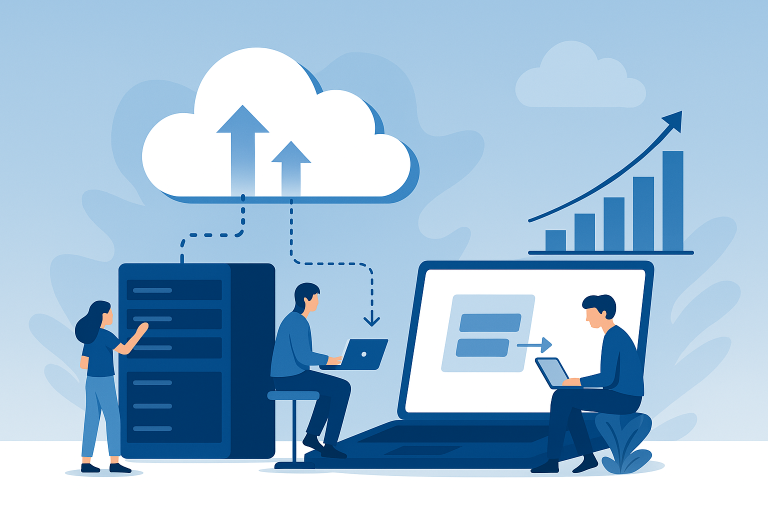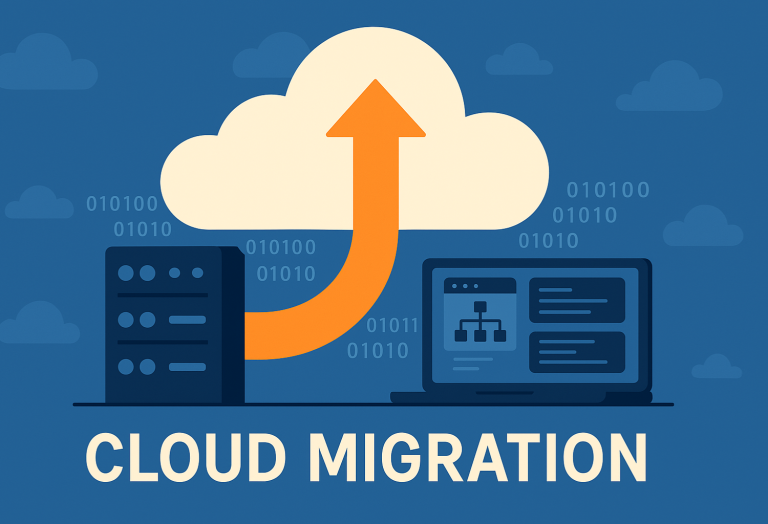
The COVID-19 crisis has pushed organizations to adopt cloud computing. Since 2020, several organizations have migrated to the cloud to get different services through the Internet. A recent survey report shows that about 92% of organizations host their IT environment in the cloud. Organizations are opting cloud as a viable option for businesses to utilize the benefits of cloud adaptation like increased flexibility, productivity, and reduced costs. Along with several advantages, cloud migration also enhances the chance of security disruption. Without proper precaution, some critical security threats can invade your systems. In the case of mismanagement, organizations may suffer from security threats like data breaches and leakage. To avoid such situations, let’s have a look at the most popular cloud security trends in current times.
Trend 1# Cloud Security Posture Management (CSPM)
There are multiple reasons, such as misconfiguration, lack of visibility, and unauthorized access, that contribute to the highest-ranked cloud threats. To address these issues, organizations can implement automated risk detection and remediation processes across their cloud infrastructure. One such measure is Cloud Security Posture Management (CSPM), which reviews the configuration of cloud platform accounts and helps identify potential misconfigurations that could lead to data breaches and leaks.
With an expanded cloud environment, identifying all misconfigurations using traditional systems becomes challenging. However, CSPM can simplify and improve this process. According to industry analyst Gartner, misconfiguration is a core cause of data breaches. Therefore, reducing or eliminating misconfiguration issues can significantly enhance functionality and security.
With CSPM, you can achieve the trust of your users in terms of safety and security. You can utilize CSPM for risk visualization and assessment, incident response, compliance monitoring, and so on. It can uniformly apply best practices for cloud security.
Let’s see how CSPM can be beneficial for businesses:
- Fast and easy identification and remediation of cloud misconfigurations
- Keep track of the latest configuration status
- Inventory of best practices of varied cloud infrastructure
- Efficiently function with PaaS and SaaS platforms even in a multi-cloud environment
- Maintains a thorough check on storage bucked, encryptions, and account access permissions
Trend 2# Ensure customer data security before it reaches the cloud
According to Statista, in 2021, the top cloud security concerns were data loss and leakage (69%), followed by data privacy/confidentiality (66%).
Though cloud computing has numerous benefits, security is always a massive concern with it. As the data remains out of the owner’s direct control, it makes security a top concern. And, an increase in the number of data breaching incidents has made businesses more concerned about improving data protection. Organizations are working towards developing new standards, rules, and regulations to protect crucial customer data.
For better data protection, organizations are highly invested in encrypting data before migrating it to the cloud. Many of them are introducing Bring Your Own Key (BYOK) encryption system for the overall benefit of the organization and customers. With BYOK encryption system, you can encrypt the organization’s data, and the access to your business information lies with you.
Trend 3# The zero-trust model
With the zero-trust security model, you can enjoy complete security by assuring that no one gets unauthorized access to data. So, you can restrict the users’ access, and they will get access only to the needed information.
Here the user needs to authenticate their identity in every step. With this security model, the owner will get back the control. With a limited access facility, the chances of data breaches reduce.
Adapting the zero-trust model has become necessary to deal with the increased number of insider attacks. As employees will not have access to irrelevant sensitive information, chances of internal data theft will be minimal.
Trend 4# SDLC and DevSecOps within the cloud
With an increased adaptation of DevOps, organizations can release effective software programs with minimal risk. In the present situation, several organizations rely on
DevSecOps that automates the implementation of security at every software development phase and takes complete accountability. With the implementation of DevSecOps, organizations can be benefited as it reduces vulnerabilities present on program code, IaC technologies, and downtime.
The overall security on Software Development Life Cycle (SDLC) improves with the integration of DevSecOps into the current DevOps pipeline.
Trend 5# Massive increase in cybercrimes
One of the main reasons behind the popularity of cloud computing is easy access to information at all times. But, this facility also enhances the chance of cybercrime. The number of cybercrime has increased due to decreased visibility and control with the cloud. Even a large number of users are least aware of the associated threats.
So, organizations need to incorporate employee training programs to upgrade users about security measures. Plus, companies must use end-to-end encryption to reduce the chance of cybercrime. Though everyone knows about the severe threats, only one in five organizations assess their cloud security posture regularly. It is essential to have a risk assessment from time to time to save your business from massive losses.
Trend 6# Requiring centralized platforms
To get maximum benefits, several organizations hire more than one cloud provider. In such conditions, you need to have a centralized platform to implement relevant measures and security controls.
Organizations can also consult a cloud security access broker (CSAB), a connector between cloud applications and users. With CSAB, you can enjoy smooth functionalities and better visibility. CSAB conducts continuous scanning of the concerned activities, implementing essential major procedures, etc.
Trend 7# Increased investment in intelligent security
Cutting-edge techniques like Artificial Intelligence (AI) and Machine Learning (ML) can provide maximum data protection, helping safeguard your business from severe cyber theft. Through these advancements, organizations can quickly trace security threats that may lead to data breaches, preventing significant damage.
Furthermore, many organizations rely on AI/ML to build better customer trust and expand their customer base. However, alongside these advantages, the shortage of cybersecurity professionals has increased the demand for these technologies to enhance security measures.
Conclusion
With ongoing technical advancements, each passing day brings new and more sophisticated cyber threats to businesses. Therefore, it’s crucial for every organization to rethink their existing security measures and consider more updated cloud security practices to prepare for the worst.
By implementing the security trends mentioned above, you can rebuild your security infrastructure and incorporate stronger measures to protect your integrity while fostering lasting relationships with customers. To enhance your cloud security further, you can collaborate with your IT infrastructure consulting services partner and consistently work on security considerations to safeguard your business from emerging cyber threats.

